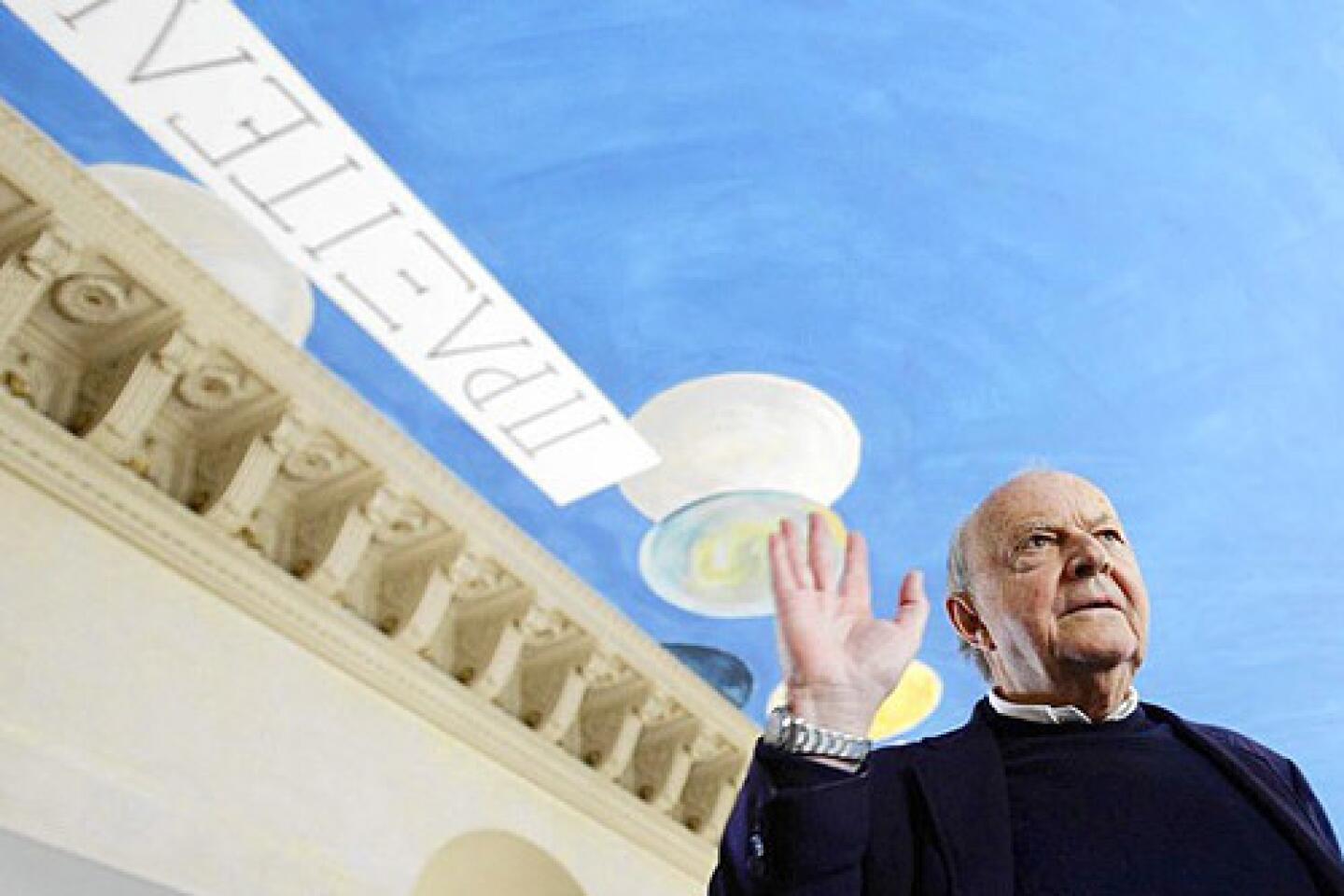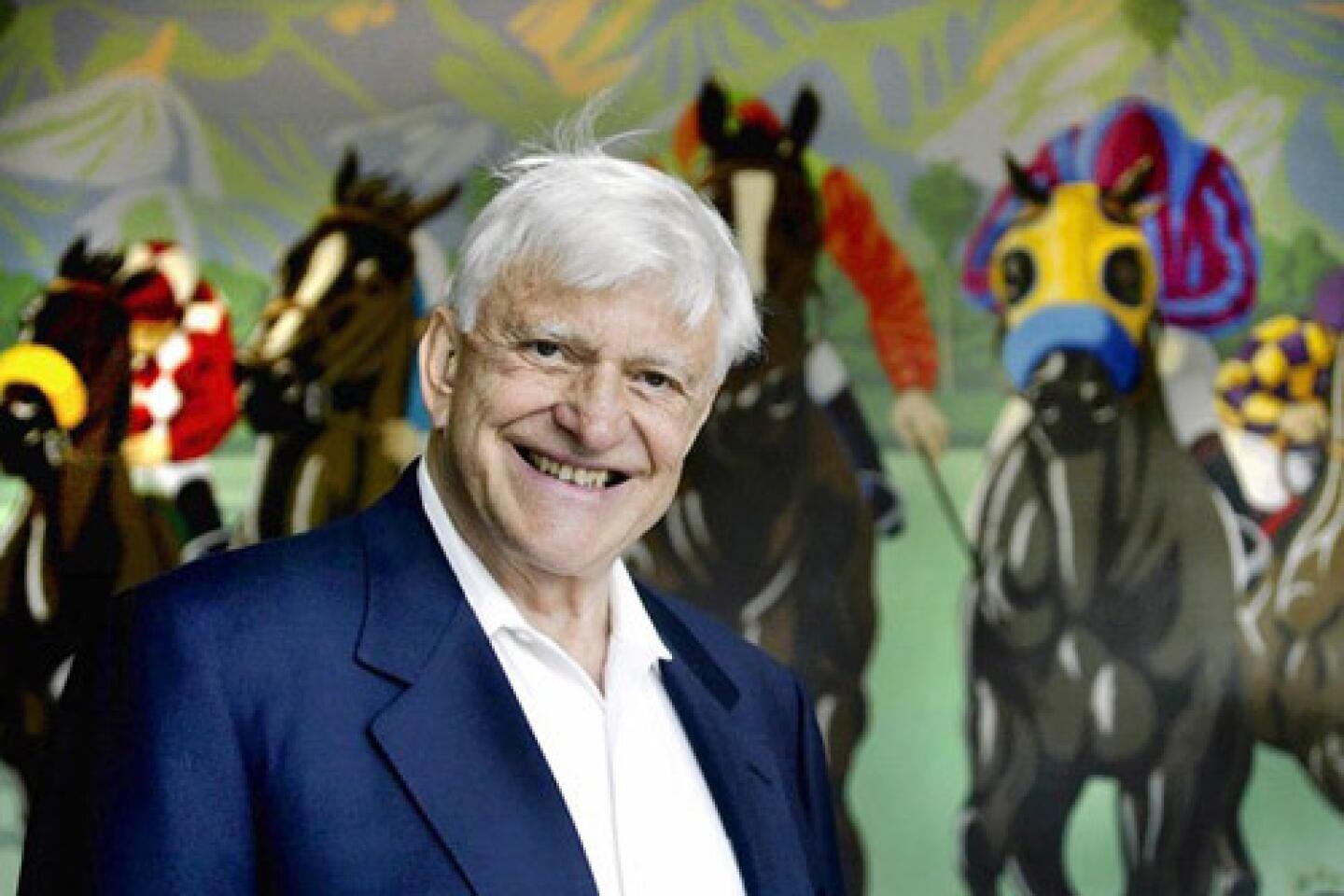Ricardo Legorreta dies at 80; Mexican modernist architect
- Share via
Ricardo Legorreta, the architect who introduced Mexican modernism to a global audience and who brought his crisp, brightly colored aesthetic to downtown Los Angeles with a controversial 1993 redesign of Pershing Square, has died. He was 80.
Legorreta died Dec. 30 in Mexico City of liver cancer, according to Adriana Ciklik, a principal in the Mexico City-based firm Legorreta and Legorreta, which the architect had run in recent years with his son Victor.
Although Legorreta’s work featured the clean lines and spare forms of modern design, it also incorporated elements of Mexican vernacular architecture including thick protective walls, spacious courtyards and bold color. His style, which barely wavered over the years, attracted the attention of clients on several continents, enabling him to take advantage of the increasing globalization of architectural practice in the 1980s and ‘90s.
His designs, as a result, embodied a contradiction made possible by the nature of late 20th century architecture: He was a regionalist whose photogenic and widely published projects made him well-suited for worldwide fame.
Legorreta began his career in the shadow of his two mentors, Mexican modernists Luis Barragan and Jose Villagran, but by mid-career had become far more prolific than either one, landing work as far afield as London, Australia and Qatar. His firm became particularly sought after in the American Southwest. Along with numerous commissions in and around Los Angeles, including a house for actor Ricardo Montalban in the Hollywood Hills, he designed a library in downtown San Antonio, a visual arts center for the College of Santa Fe in New Mexico and the IBM national marketing and support center in Solana, Texas.
There was a strong sense of procession and a noticeable theatricality in Legorreta’s designs. Serpentine plans and hidden courtyards replaced direct axes and clear sightlines. He inherited from Barragan a distrust of the glass curtain wall, preferring the sense of enclosure and stability provided by thick-wall construction.
“Modern architects want too much clarity in a building,” he told Architectural Record in 2000. “They miss the pleasures of mystery and intrigue.”
Ricardo Legorreta Vilchis was born May 7, 1931, to one of Mexico’s wealthiest and most prominent families. His father, Luis, and his uncle Agustin founded BancoMex, the largest bank in the country. Legorreta became fascinated by architecture as a high school student and enrolled in the late 1940s at the National University of Mexico, where he studied with Villagran, at the time among the most prominent architects in the country.
Legorreta went to work in Villagran’s office after graduating and stayed there for nearly a decade. But he felt increasingly limited by the older architect’s fidelity to European-style modernism.
After establishing his own practice in 1963, he used his first major commission — an automobile factory in the city of Toluca for a Mexican-owned company called Automex — to make his own hybrid sensibility plain. Though the 1964 design largely followed modernist rules, showing the continuing influence of Villagran on his work, it included two large cone-shaped volumes rising dramatically from its center. Legorreta saw the project as a symbol of Mexican autonomy.
“When I built Automex, it was like an explosion inside me, a rebellion against all the discipline I had known and the foreign domination of my country,” he told an interviewer in 1995. “It was like yelling ‘Viva Mexico!’ and ‘Viva the Mexican worker!’ ”
Legorreta showed the first real glimpses of his mature style in his design for the Camino Real hotel in Mexico City. Built in 1967 in the run-up to the 1968 Summer Olympics, it included the dramatic colors, deep-set windows and sense of solidity that would become his hallmarks.
By the 1980s Legorreta was beginning to find steady work outside Mexico. As a result, he became increasingly interested in exploring what it meant to practice regional architecture on a global scale. At a 1990 symposium on contemporary Mexican architecture held at the Pacific Design Center in West Hollywood, he framed the issue this way: “Is ... authenticity portable? That is the question that every architect who works in a number of different countries, as many now do, must ask.”
In the early 1990s, as he was becoming the face of Mexican architecture abroad, Legorreta’s office took over the redesign of Pershing Square in downtown Los Angeles. Jurors in an earlier open competition had chosen a design by the firm SITE Environmental Design, but it never got off the drawing board. A second, private competition was held, and Legorreta won.
That victory was perhaps a more significant moment in the cultural history of Los Angeles than in Legorreta’s own career. His scheme, a collaboration with the landscape architect Laurie Olin anchored by a 10-story purple bell tower, has been harshly criticized over the years, largely because it exacerbates the plaza’s detachment from the city around it.
At the same time, Legorreta’s design, according to the author William Alexander McClung, emerged “as a hopeful symbol of Mexican-Anglo cultural interdependence, thus explicitly conceding the end of Anglo hegemony” in Los Angeles.
As his fame and commissions grew, so did opposition to the sharp colors that had become his trademark. In the mid-1980s, Legorreta was hired by the Irvine Co. to design a $90-million shopping center in Tustin. His design featured purple walls, but complaints from residents and the Tustin mayor prompted the developer to repaint them in a more conservative reddish-brown shade.
Information on survivors was unavailable.
More to Read
Start your day right
Sign up for Essential California for the L.A. Times biggest news, features and recommendations in your inbox six days a week.
You may occasionally receive promotional content from the Los Angeles Times.





















































